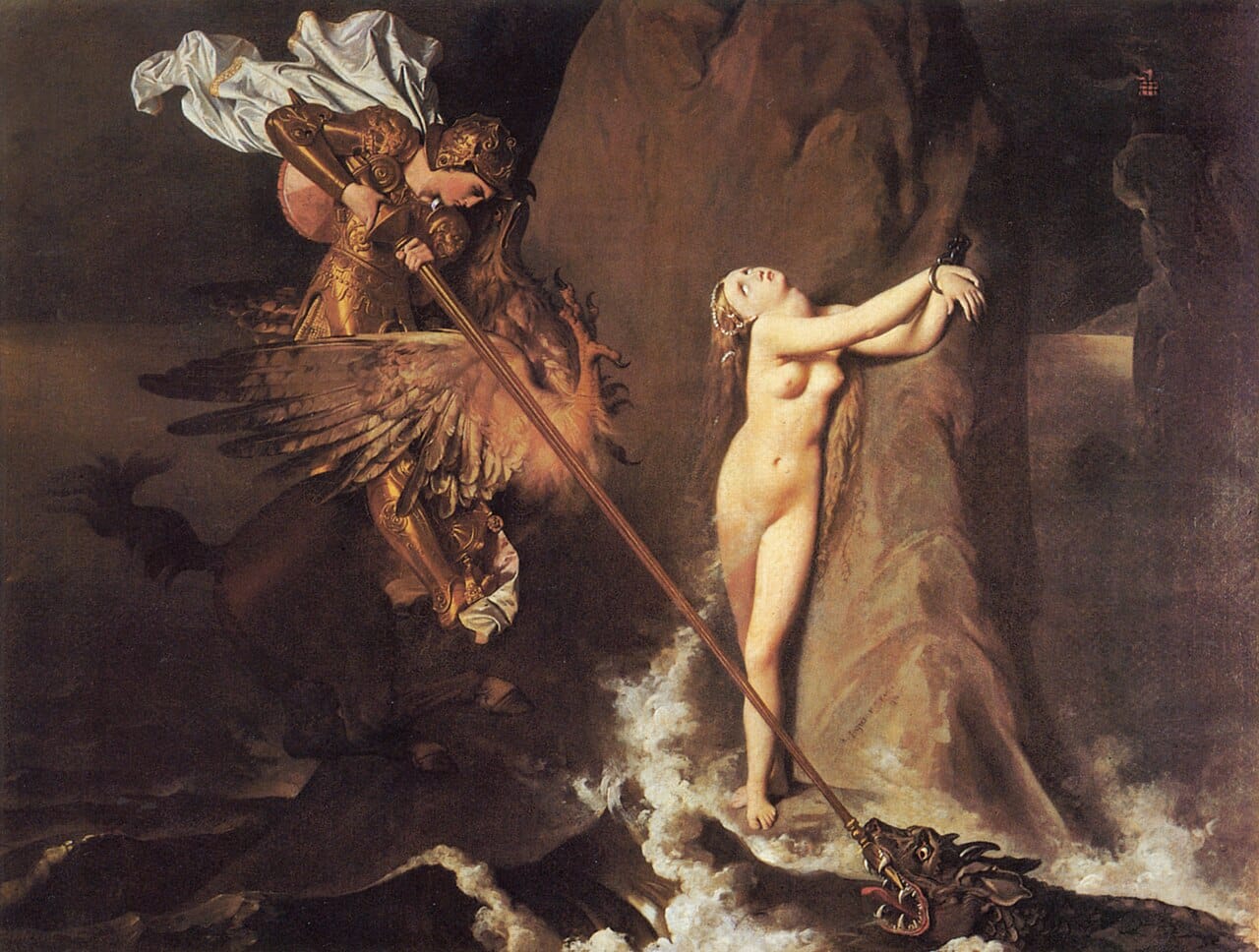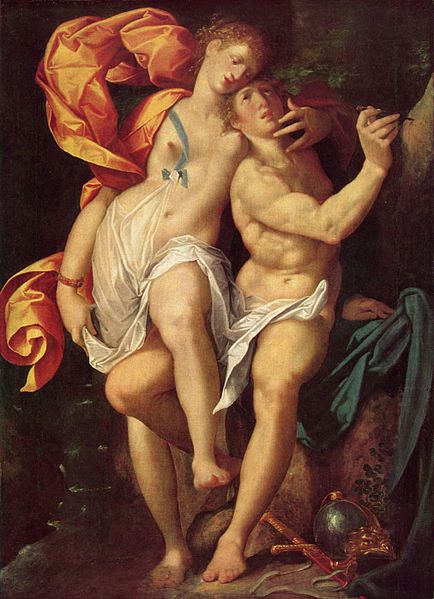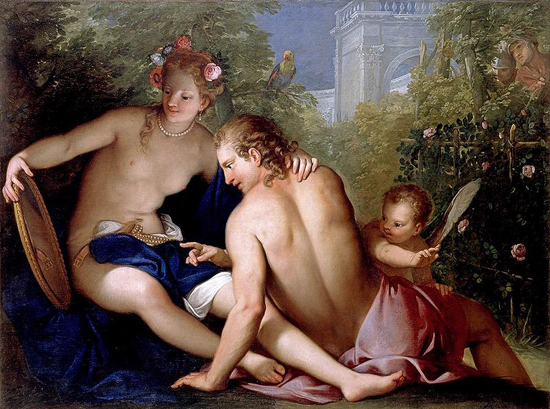'Orlando' and the first cross-racial romances
The marriage between Desdemona and Othello was not the first cross-racial romance in Western literature. Perhaps Jason (from Greece) and Medea (from Colchis) were first, here. Cleopatra? Zenobia? By medieval times, it's Parzival's father, Gahmuret, who travels to Africa and marries the Moorish Queen Belacane (she gets pregnant and he abandons her). Even Othello is preceded by Cinthio's version of 1565.
Then there are the couples in Orlando Innamorato (Orlando in Love) by Matteo Maria Boiardo, which appeared in 1482, and the far better known extension of the story Orlando Furioso (The Frenzy of Orlando) by Ludovico Ariosto from 1516, when the action takes place against the backdrop of the Saracen invasion of Europe. There is even a magic ring of invisibility, a trip to the moon, wizards and enchantresses and, of course, beautiful pagan princesses.

Orlando is the Italian name for Roland, the hero of the Charlemagne legends, who would die later at Roncevaux (Roncevalles). In Boiardo's epic, which takes place earlier, Orlando and his cousin Rinaldo (Reynaud in French) are in love with princess Angelica of Cathay. Cathay was known to Europeans from The Travels of Marco Polo (around 1300), as referring to anywhere along the Silk Road from Bokhara to Peking, so Angelica was definitely meant to be exotic, even if her name wasn't. However, the two Christian heroes, Orlando and Rinaldo, never succeed with her and this drives Orlando crazy - unrequited love being a form of madness, so they say. Writers and painters lost interest in them of course - what was there to say? - and they turned instead to the Saracen knights. Only musicians remained faithful (Lully, Vivaldi, Handel).
That's Angelica in the painting above, chained to the rocks like Andromeda, in Ingres' painting. She doesn't look Chinese though, does she? Maybe French. But, when magic drugs were not involved, Angelica's preferences, it turns out, were for Saracen or Moorish knights like Ruggiero and Medoro. That's Ruggiero above, rescuing her. His father was a Christian knight and his mother was a Saracen or Moorish princess, and the prophecies suggested his allegiances could go either way. Ruggiero doesn't win Angelica either but, for the first time in European literature, the heroine, despite her name, is from a non-Christian civilization and another non-Christian is rescuing her. Religion and class appear to be more important here than racial difference.
Angelica ends up instead with another Saracen/Moorish hero, Medoro, who has been wounded in battle. Angelica rescues him and takes him away to Cathay. Spanish writers were especially fascinated by this and artists from all Europe tried their hand at painting it. Below is Bartholomeus Spranger's portrait of the two lovers, from around 1600. The heroes appear to be Flemish though - like Spranger - and not wounded. He is carving their names into the tree, a popular theme of the day.

Ruggiero, meanwhile, is successful with another princess: Bradamante. She is Rinaldo's sister, a female Christian knight with a magic lance that unhorses her opponents. She falls in love with Ruggiero and rescues him from the enchanted castle of the wizard Atlantes and the island of the enchantress Alcina, but Bradamante refuses to marry him unless he converts to Christianity. He does. However, no European painters were interested, perhaps because they weren't interested in woman warriors? It's a mystery. Only the musicians bothered (Handel again).
Torquato Tasso would pick up these themes of Ariosto's in Jerusalem Delivered (Gerusalemme liberata) (1581) with the love between Armida, an exotic Saracen sorceress and Rinaldo, a Christian descendant of the Rinaldo mentioned above - more here. Below are the two lovers in Rococco style by Antonio Bellucci from the late 1600's, replete with a Cupid.
Many other painters tried their hand at this subject in the 18th century and the appeal seems to have been the notion of lovesickness (after all, she has seduced him with magic and he has ditched the war to stay with her) and betrayal (he ends up ditching her instead and returning to the war).

The other cross-racial romances in Gerusalemme liberata are between the Christian knight Tancred and the various Muslim women interested in him - the warrior maiden Clorinda, whom he is in love with, and the Princess Erminia. These couples were less appealing to artists. Armida, on the other hand, recalled Circe, Calypso, Morgan le Fay and other doomed enchantresses...
